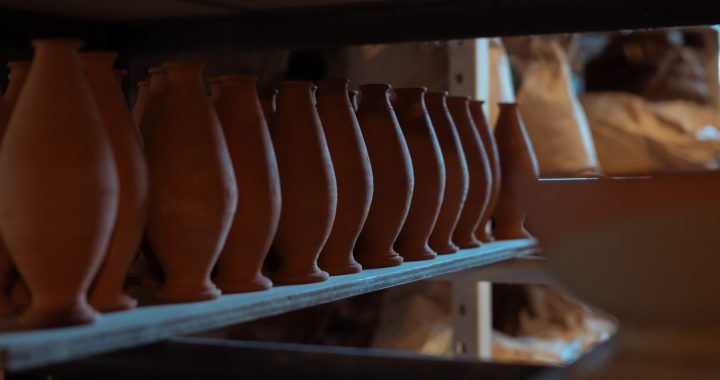Bio:
Hozan Tanii, a third-generation potter based in Shigaraki, is recognized as one of the leading innovators of Shigaraki-yaki ceramics. Born in Nara Prefecture in 1953, he is the kiln master of Tanikan-gama (谷寛窯), a workshop originally founded by his grandfather in Shigaraki during the early Shōwa period (1926–1989).
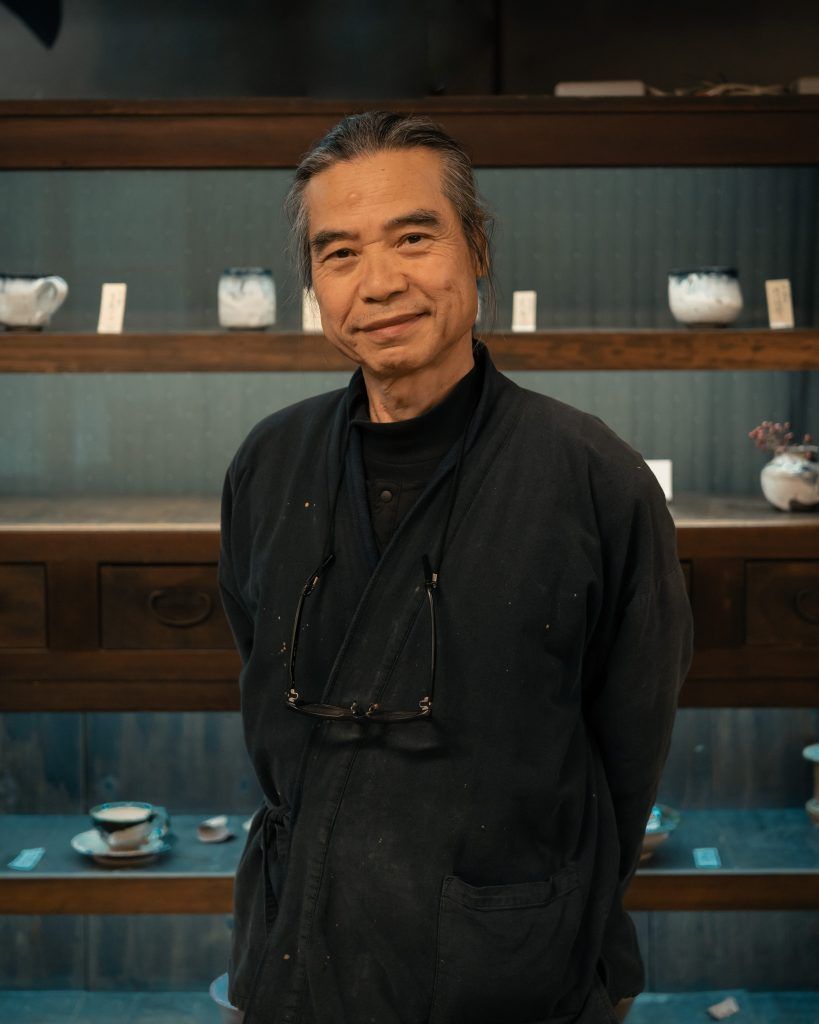
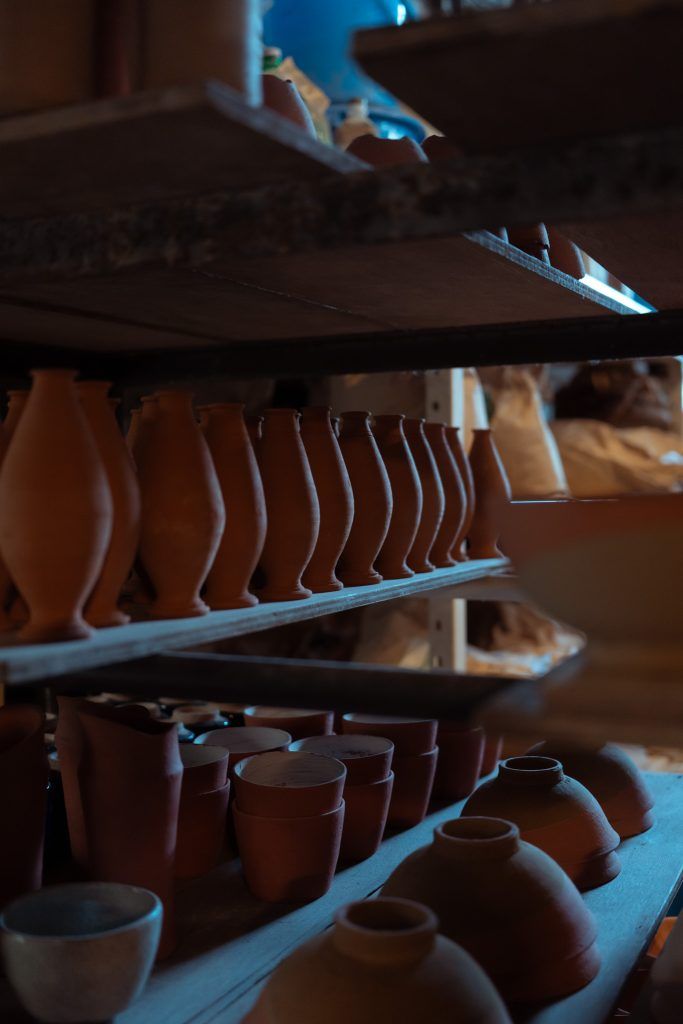
In 1995, he built Shio-gama, the first salt kiln in the region. Later, he constructed Enbugen’yō, the first anagama (climbing kiln) of its kind in Shigaraki. Hozan-san trained over 20 apprentices from across Japan, balancing his role as both master and manager of Tanikangama. It wasn’t until he turned 40 that he could fully focus on creating his own work. Hozan-san has also developed sustainable glazes using barrel ash and even UCC Coffee grounds, reflecting his innovative approach and commitment to environmental responsibility.
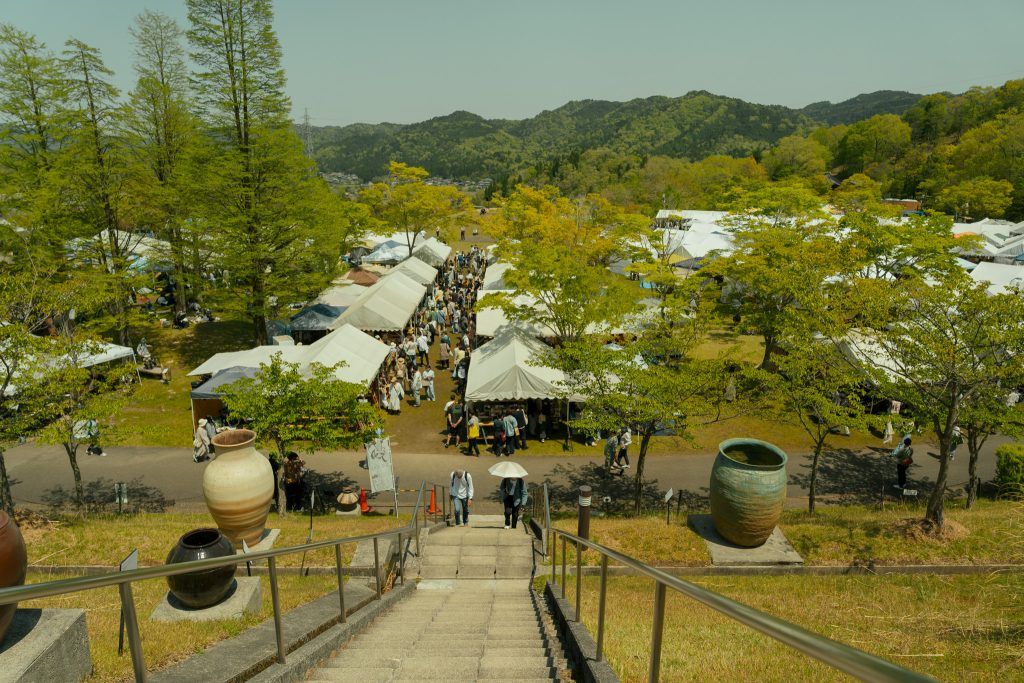
Story:
The unexpected encounter
I only discovered Hozan-san’s impressive resume after conducting further research into his work. I wanted to convey just how remarkable travel can be—especially through these kinds of unexpected encounters. This particular moment stood out as the highlight of my entire three-month stay in Japan. What made it even more special was having the chance to interview Hozan-san without knowing anything about his background beforehand. So, please bear with me as I recount the perfect day.
We were on a mission to find an ancient climbing kiln and explore whatever we might come across in Shigaraki. As luck would have it, we visited a pottery festival that happened to be organised on the very day of our field trip—bringing together artisans of all kinds to this historic town, known as one of Japan’s six ancient kiln sites. It was a feast for the eyes—plates, cups, and kyusus of every kind lined the stalls, tempting us at every turn. As we meandered through the festival, our wallets grew lighter and lighter, but we were delighted regardless.
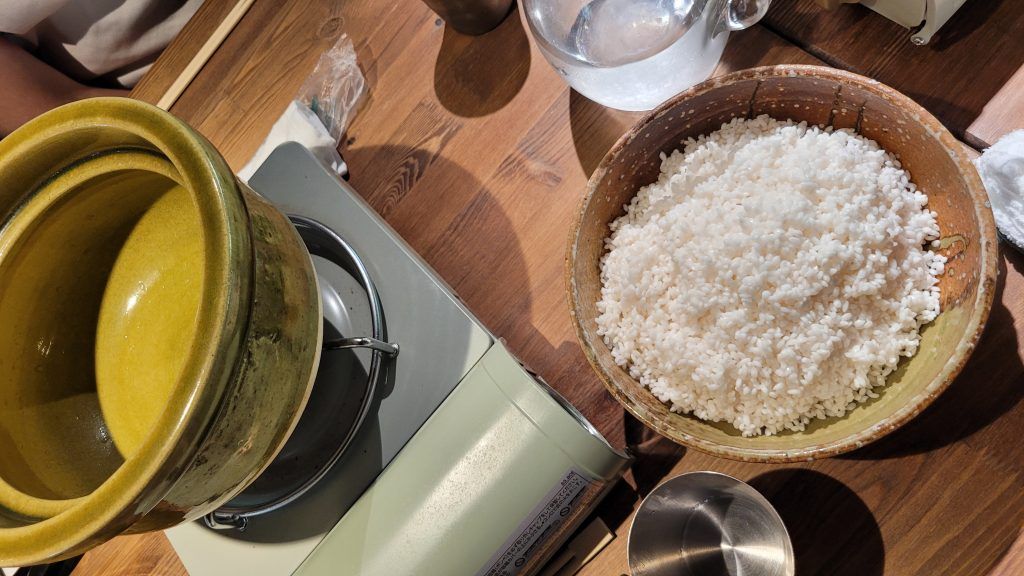
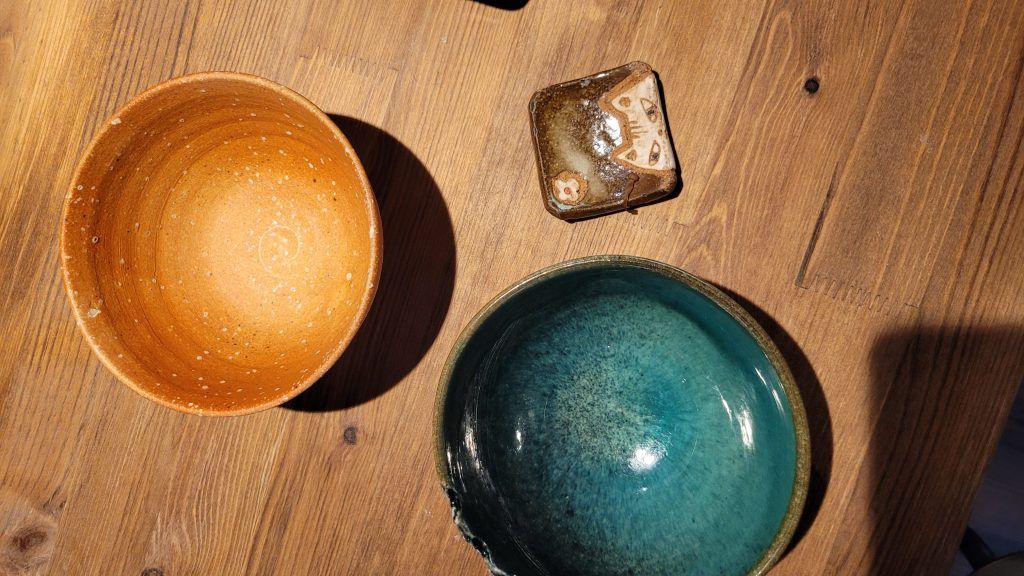
After a break for lunch—where we enjoyed perfectly cooked rice made in traditional Shigaraki clay pots at 土鍋ごはん&CAFE 睦庵—we were delighted by a unique bonus: choosing our own Shigaraki ware rice bowl and chopstick holder. Mine was a charming cat design that wrapped all the way around its flat, rectangular shape. The diligence and attention to detail is truly unrivalled, making the whole experience both fun and memorable.

Bathed in amber sunlight, the afternoon air shimmered with gentle heat we pressed on for the final objective of the day, which was to find a noborigama (climbing) kiln. We did find such a one, but as the gallery was closing, we luckily stumbled upon an anagama kiln as well down the street. It was a functioning anagama kiln, not just a display piece—test ceramics with varying glazes and colours were precariously arranged nearby, hinting at ongoing experimentation. As we climbed the hill, we came upon a beautiful old wooden building that resembled a cross between a barn and a factory, complete with a chimney rising from its side and ivy climbing up its weathered walls. And here was where our unexpected discovery began.
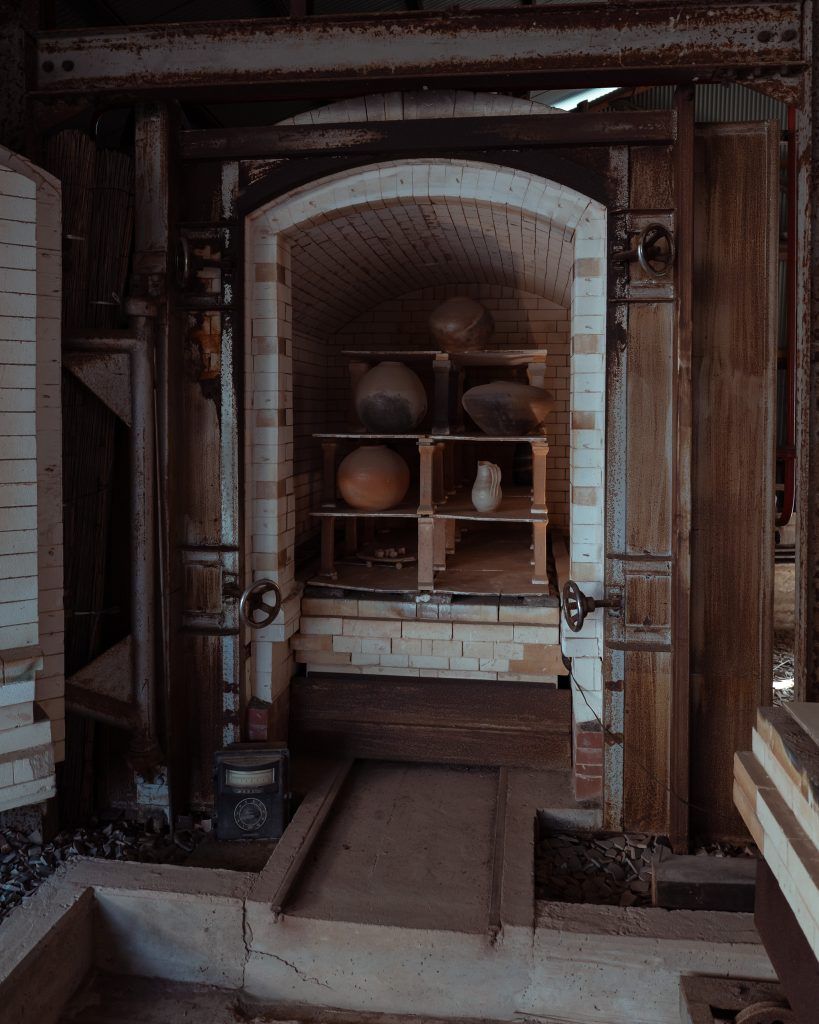
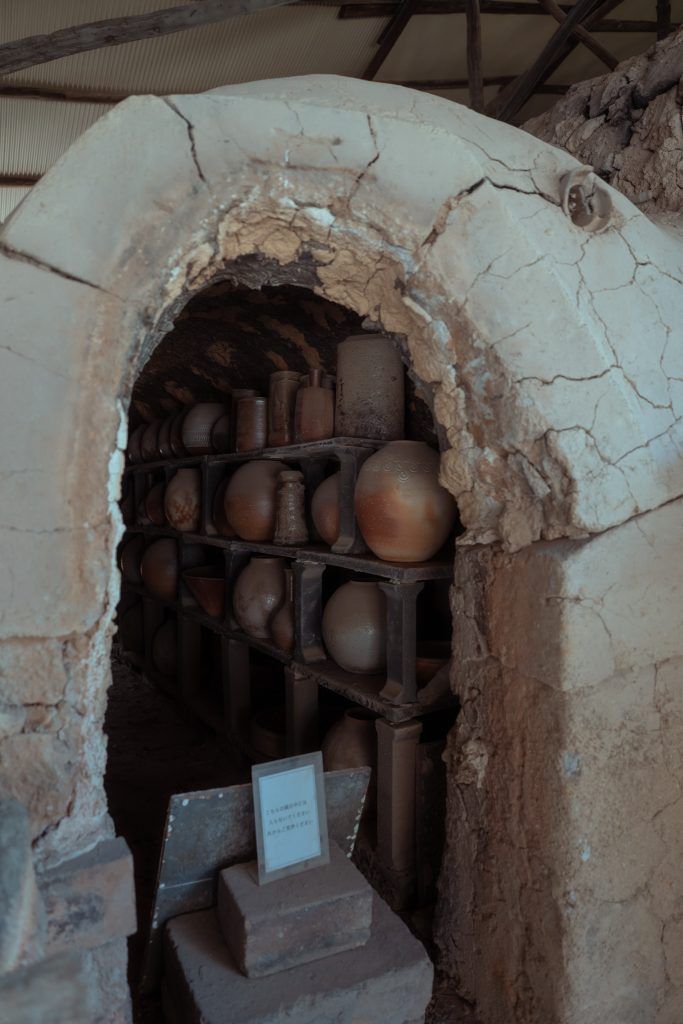
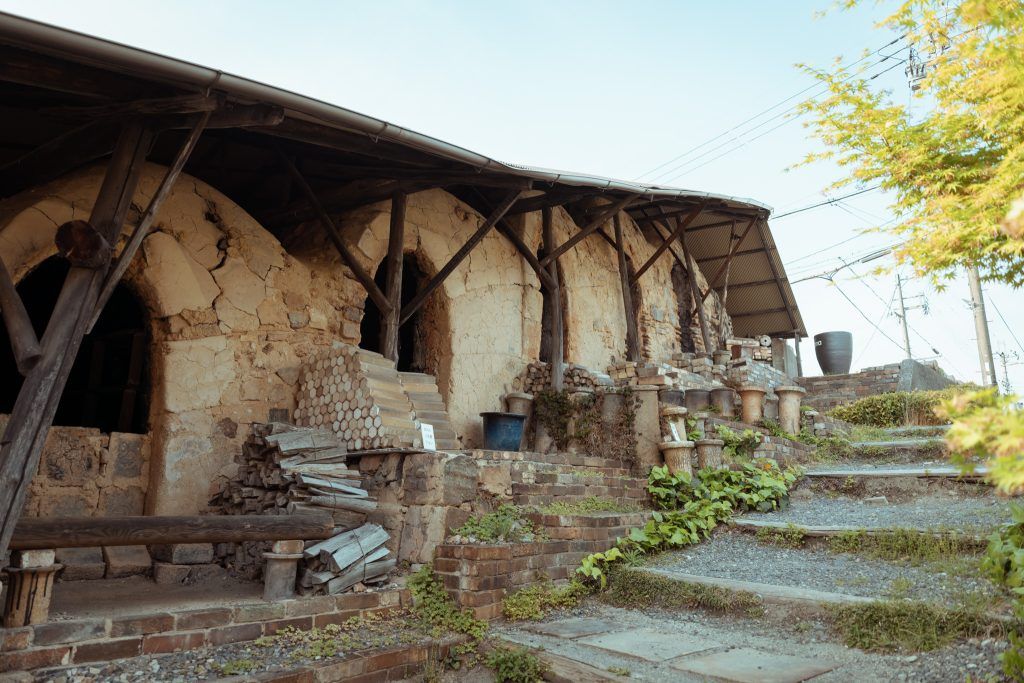
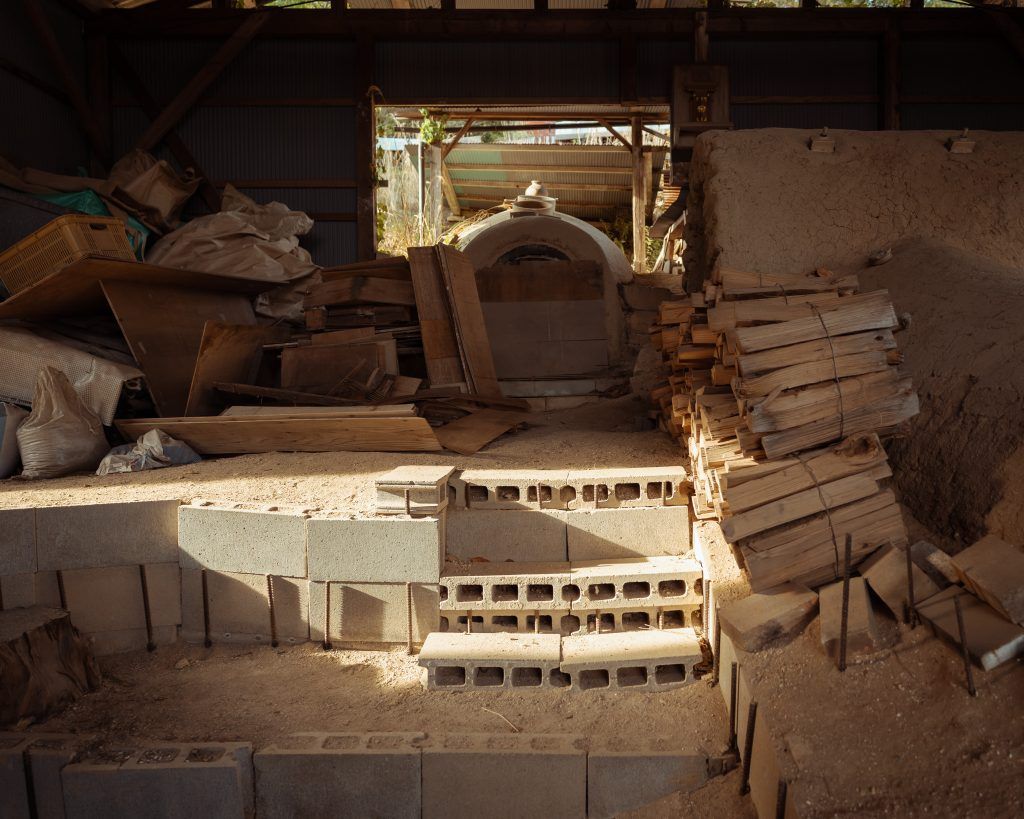
As we entered the studio, we were greeted by a beautifully arranged entranceway, where pottery and woodwork pieces were artfully displayed alongside flowers and natural materials, showcasing the many uses of the craft. The space felt like a blend of an exhibition and an ancient museum—rustic and down-to-earth—surrounded by shelves brimming with earthenware. It was both a working studio and a shop.
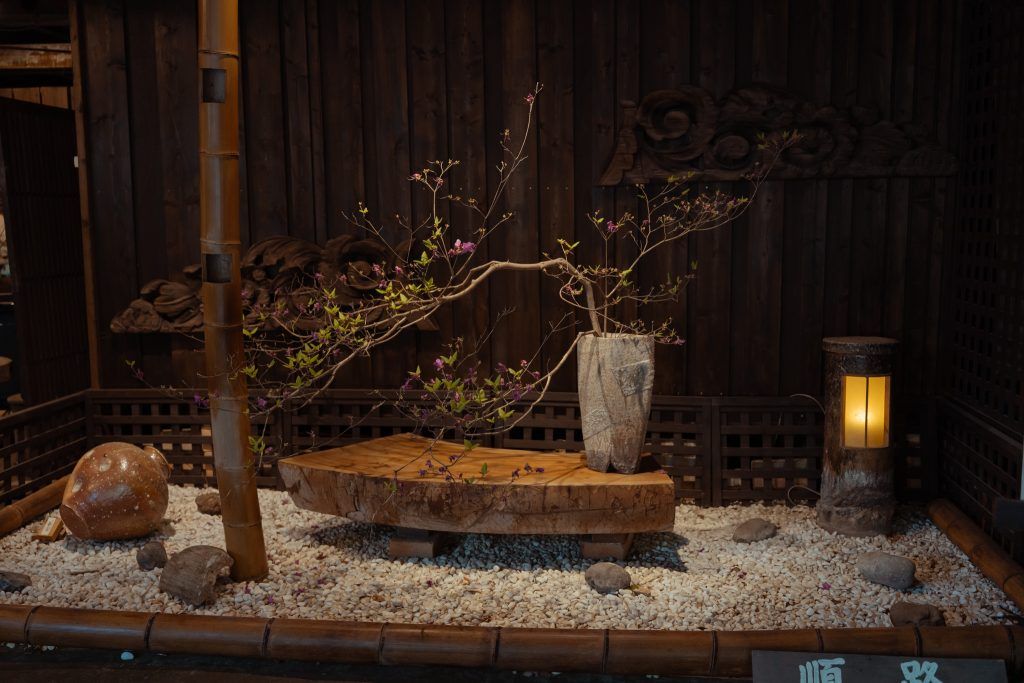
A small entrance led into an anagama kiln carved like a chamber, housing even more pottery pieces, with each corner offering its own unique atmosphere, elegant yet full of character. There, I encountered something that immediately captured my full attention. And this was after a whole day at a pottery fair just hours earlier, where I thought I couldn’t possibly absorb any more stunning variations. Yet this piece silenced them all. I will return to it shortly.
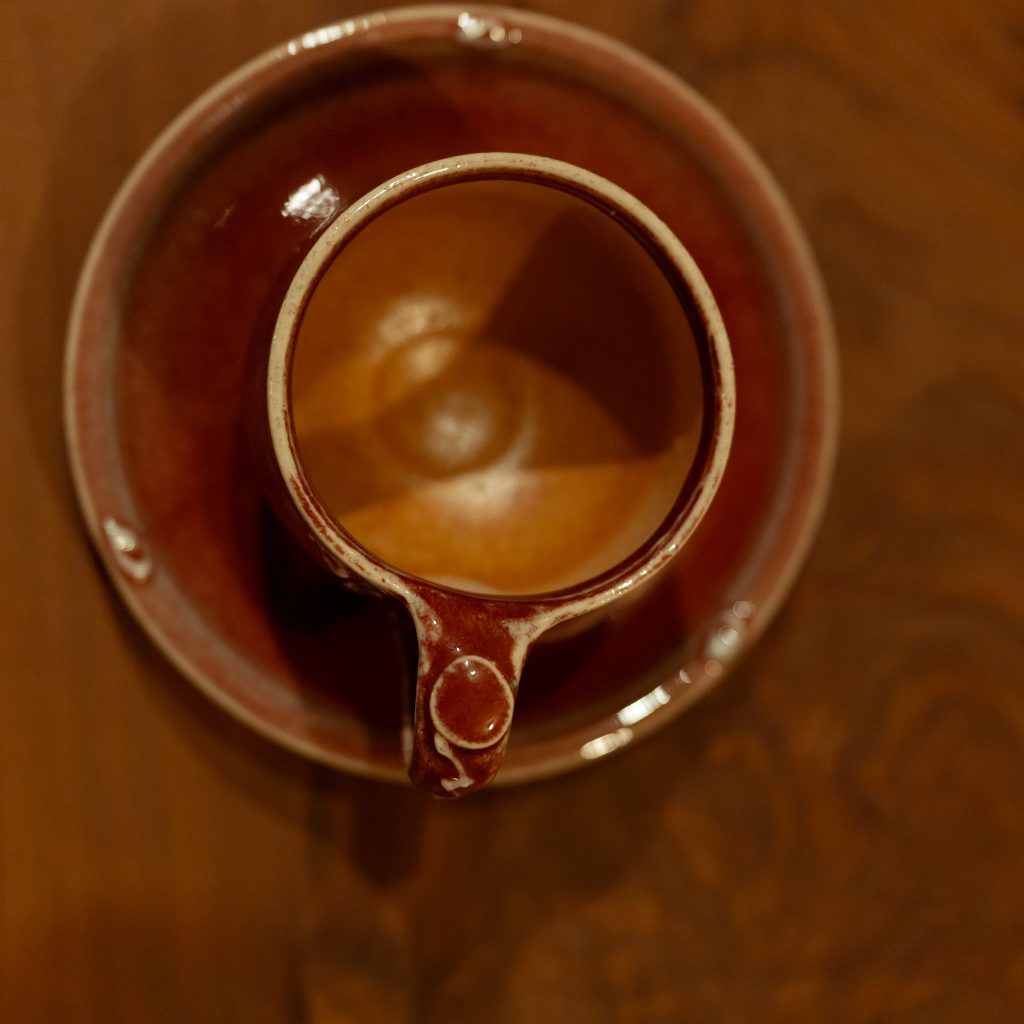

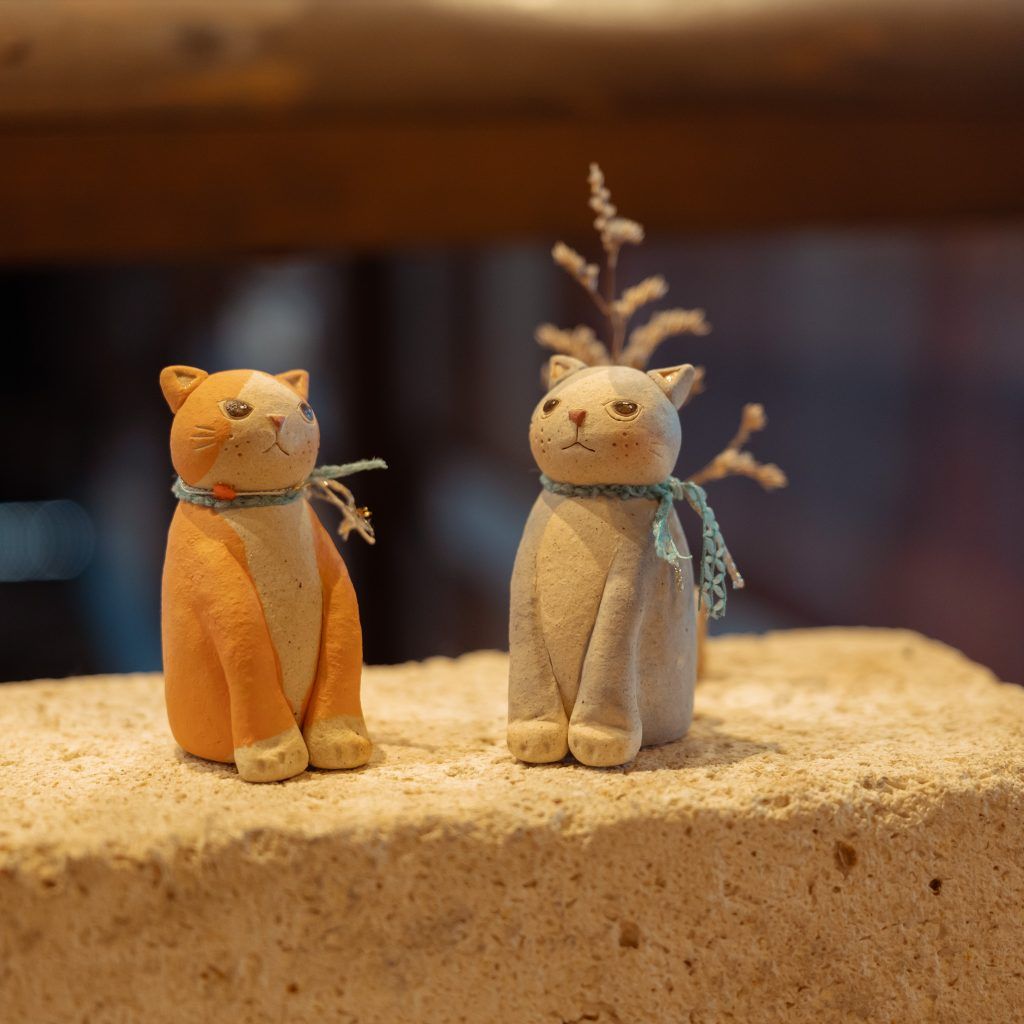
After climbing upstairs to explore many more unique pieces, I decided to purchase this cup and saucer set. Though I noticed another similar one, each piece was unique, and it was the set displayed inside the kiln that truly caught my eye. As we were about to leave, we paused briefly to admire a charming Shiba with his owner—who, we later learned, was waiting to close up shop for the day.
And that was that.
Just when we thought our visit was over—despite already having overstayed our welcome—I asked my Japanese friend who the man was. She replied, “That’s the owner.” In that split second, I gently asked Chihiro if she could inquire about the possibility of an interview with him.
I had intended to contact him later by email, but to my surprise, he asked, “Now? How long will it take?”
I said, “I guess now is okay, if you have time?” I did not have any questions prepared, but it was a now-or-never moment. I mentioned it would only take about ten minutes. So, we sat and waited for the other guests to leave before we could begin recording. They were there to have a broken pot repaired—unfortunately knocked over by their cat after purchasing it from the shop.
And so, Mr. Tanii Hozan introduced himself as a third-generation potter, and from that moment, I was completely captivated by the conversation that followed.
Bear in mind, there were seven of us. The remaining five went for a walk, assuming we would be back in ten minutes.
I wanted to know what inspires him and whether he follows a particular style. He explained that there is a basic recipe for the clay and techniques that have developed and passed down through generations. However, he also acknowledged that this tradition has adapted to modern shifts, and the passion for their craft is continued by the new generation.
When I asked about the clay they use and their process, Hozan-san explained that he works with various types of clay sourced from the nearby mountains. Because the clay often contains coarse rocks, these are ground down—much like matcha—into a fine powder. The particles are jagged rather than round, which helps them bind together more effectively. Different clays are then blended to create pottery that is both strong and less porous. A single cup might contain two types of clay—one for the inside, another for the outside—along with a carefully applied glaze. This process becomes a kind of conversation or communion with natural forms, shaped and refined through each stage.
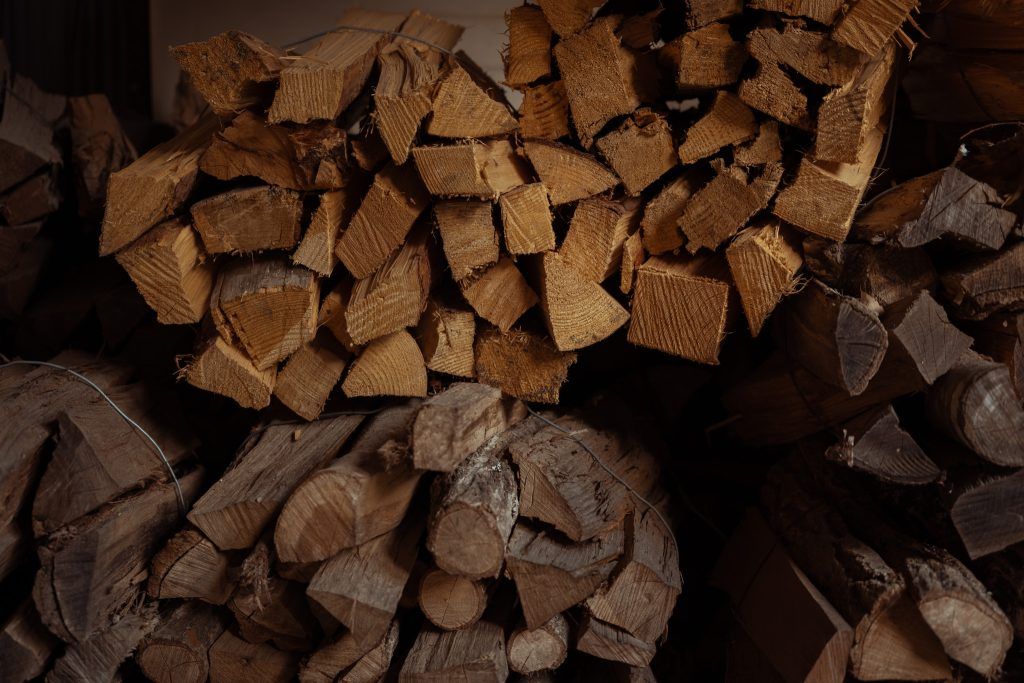
I did not understand the full conversation in depth. What I genuinely wanted to grasp was the philosophy behind his personal work—something deeper than the technical details of clay, fire, and glaze.
What followed was unexpected — I felt as though I began to understand Japanese, not through language, but through my connection to his work. As he questioned me in scientific terms my friend could not easily translate, our conversation shifted onto the subject of creation itself.
Let me reiterate:
Hozan-san: How is granite formed?
Sky: From igneous rock, I said, explaining that it cools slowly under pressure deep within the Earth.
Hozan-san: Yes. Japan is a volcanic island. When magma does not erupt but cools on the surface, it becomes igneous rock. Then, with rainfall, it gets exposed. Granite appears on mountain tops. With more rain, it breaks down and turns into clay, which humans use.
Hozan-san: It is about thinking of Earth. How was the Earth created?
Sky: Are we talking about science? I asked, trying to clarify.
Sky: Well, Earth has an iron molten core—and I guess that is what gives it the energy to spin. I said this, all the while wondering where this was going.
Hozan-san: Yes.
Sky: Pressure, I added, thinking about all the scientific knowledge I had about the Big Bang.
Hozan-san: Pressure. Lots of dust and pressure.
Hozan-san: How is soil formed? What do you think about that? How is fresh steel made? What was the surface like?
Sky: Hot.
Hozan-san: Right. The Earth collided with another planet to form, and then what happened?
Sky: It cooled, cracked, and was eventually submerged beneath the ocean.
Hozan-san: Who made the Earth, I wonder?
There was some translation confusion. I wracked my brain and said:
Sky: Atoms?
Hozan-san: Atoms. Stars. Energy.
Hozan-san: Yes—and what gives them energy to form?
Sky: I stuttered… “Neutron—stars collapse on themselves. They have protons and neutrons…” And then, seeing the expression on his face, realizing it might not be the answer he was looking for, I added, “The reason it came to be is unknown—just like dark matter. It exists but is shrouded in mystery and cannot be seen.”
Hozan-san : We are talking within the limits of current science, but I do not believe this all happened by chance.
Hozan-san: I believe it was created with intention. Because there are laws. The cosmos has rules. That is why math has advanced, and we can go into space and make calculations, right?
Somehow, we came to an understanding—delving into deep space in a foreign language, yet the point was understood.
Sky: The creation of the universe—does that secret set your work on fire?
Hozan-san: Pottery melts in the kiln. The glaze gets gooey, then we stop the fire and let it cool.
Hozan-san: I feel a connection to the Earth and receive strength. The Earth was pottery.
Hozan-san: That is the feeling I wanted to convey in my work—feeling the laws of the universe and putting that thought into the pottery.
I excitedly added, “Yes! The cup and saucer I just bought from your colleague”—which I was later told had been made by Hozan-san himself—”spoke to me of the beginning and the end, the vastness of the universe, and the deep, dark depths of the sea. A faint light shrouded in smoky clouds. It was so mysterious it drew me in and silenced everything else around me.”
I told him as much, and he looked up at me in surprise and offered me his hand.
What he was trying to tell me, I realized, was that his philosophy is rooted in his wonder at the universe—how it came to be—and that the earth is exactly like pottery. It is shaped, it passes through fire, it cracks and shimmers in uniquely beautiful ways. It is where entropy reigns, open to endless possibility.
Pottery reflects the Earth itself, and we are directly connected to it—borrowing its resources and shaping them for our lives, an act both of imitation and reverence for its natural beauty and power.
There are many things that make an artist great, and one of them is when the recipient understands the message exactly as the artist intended—and that message found me.
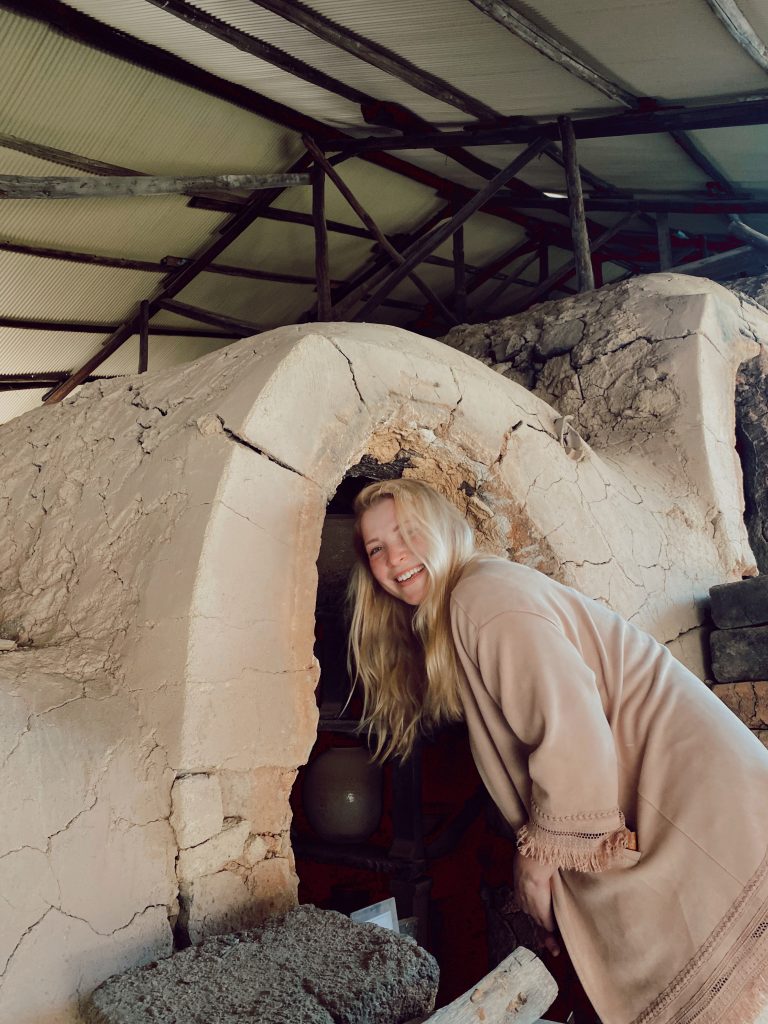
He developed the Namako-yu glaze—also known as the Sea Cucumber glaze—based on an original idea by Tanii Naokata. This traditional glaze, characterized by its speckled texture reminiscent of a sea cucumber, was used to make my cup. It became the most popular glaze of its time, and Hozan-san chose not to keep it a secret; instead, he shared the technique with all the craftsmen of Shigaraki.
The glaze originated from an iron-based oil imported from China, which was initially fired using a reduction technique (reducing oxygen in the kiln). However, the resulting colour did not suit the Shigaraki kilns, so cobalt was added, giving the glaze its signature deep blue colour. This became the base glaze. When layered three times with additional glazes, it produced a rich, dark indigo finish. At that time, Shigaraki was responsible for producing 90% of all ceramic products in Japan.
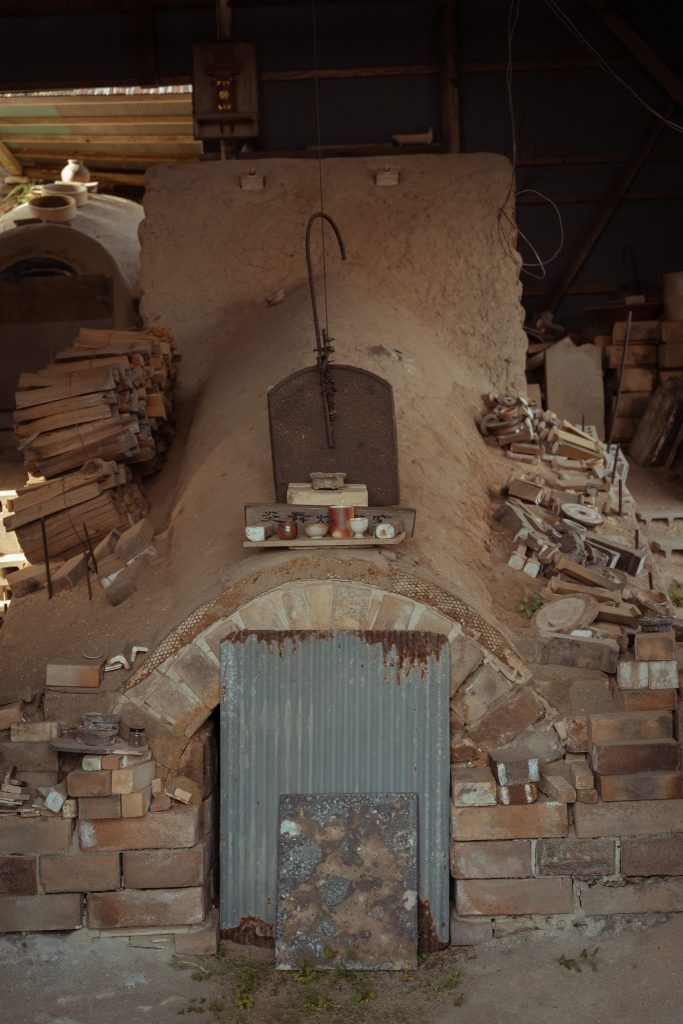
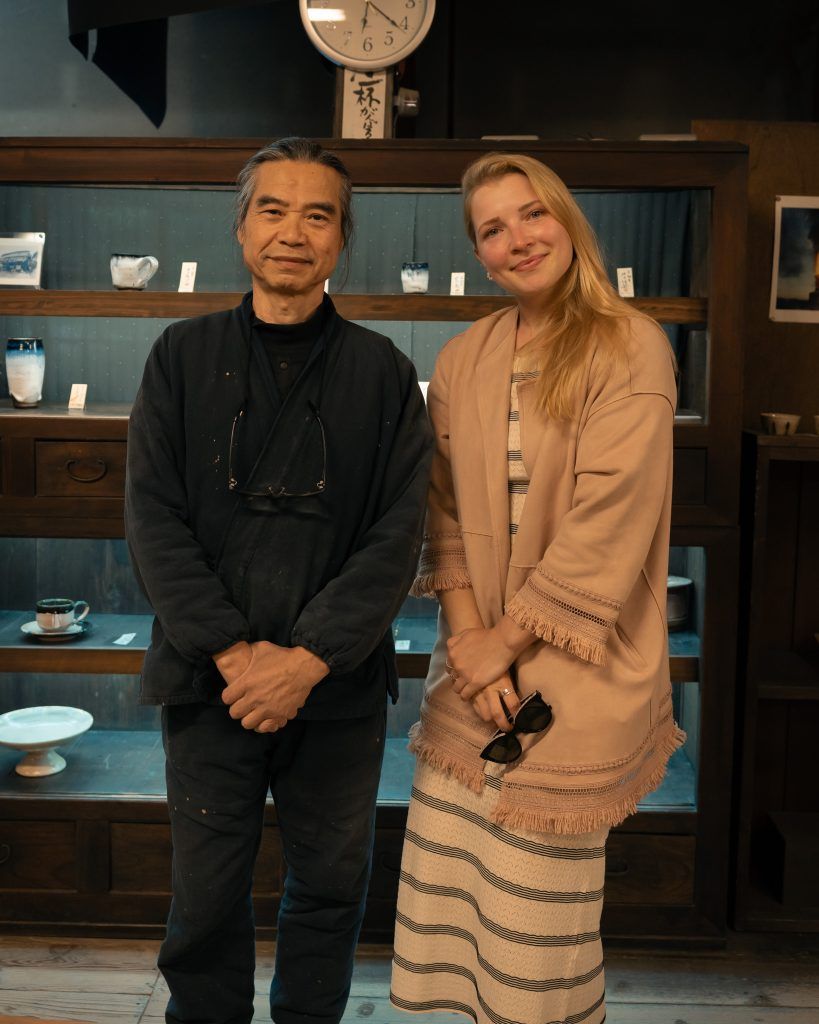
We were there long enough that tea arrived for the three of us. Comically, the table kept filling up as my friends, one by one, grew tired of waiting and came back to retrieve us. The young potter who hosted us—and who will one day take over—kept returning with more cups of tea. I still cannot believe I had the honour of speaking with the pottery master himself, and that we could connect through his work. It is a moment I will cherish forever—along with the cup, shaped from the night sky.

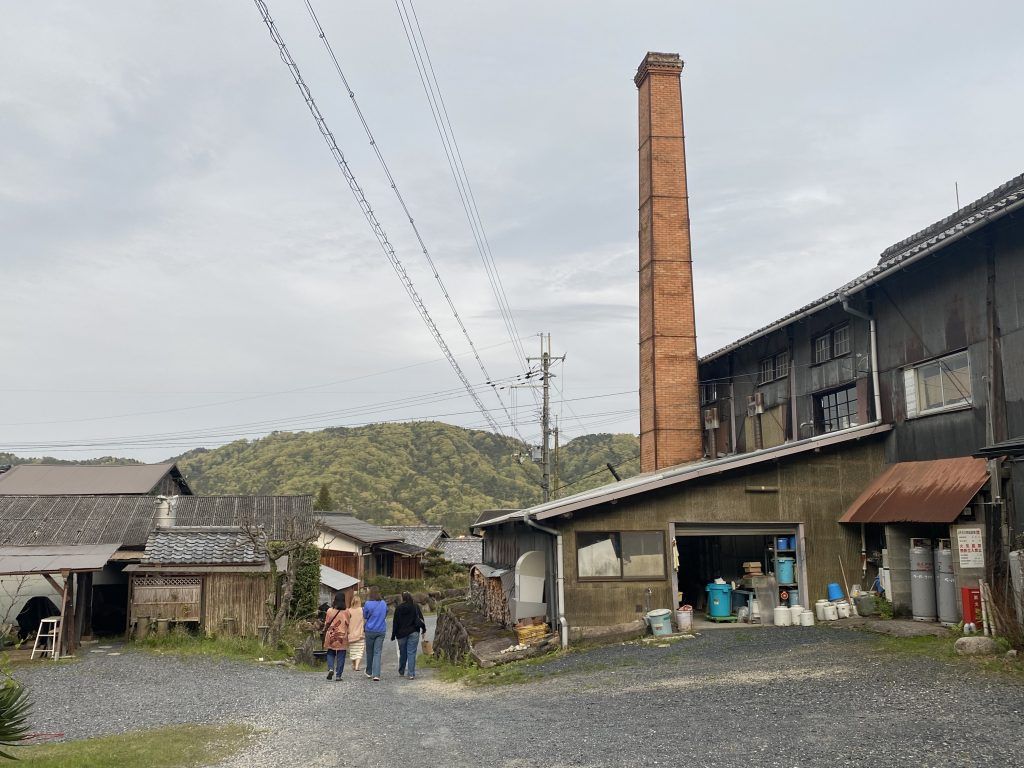
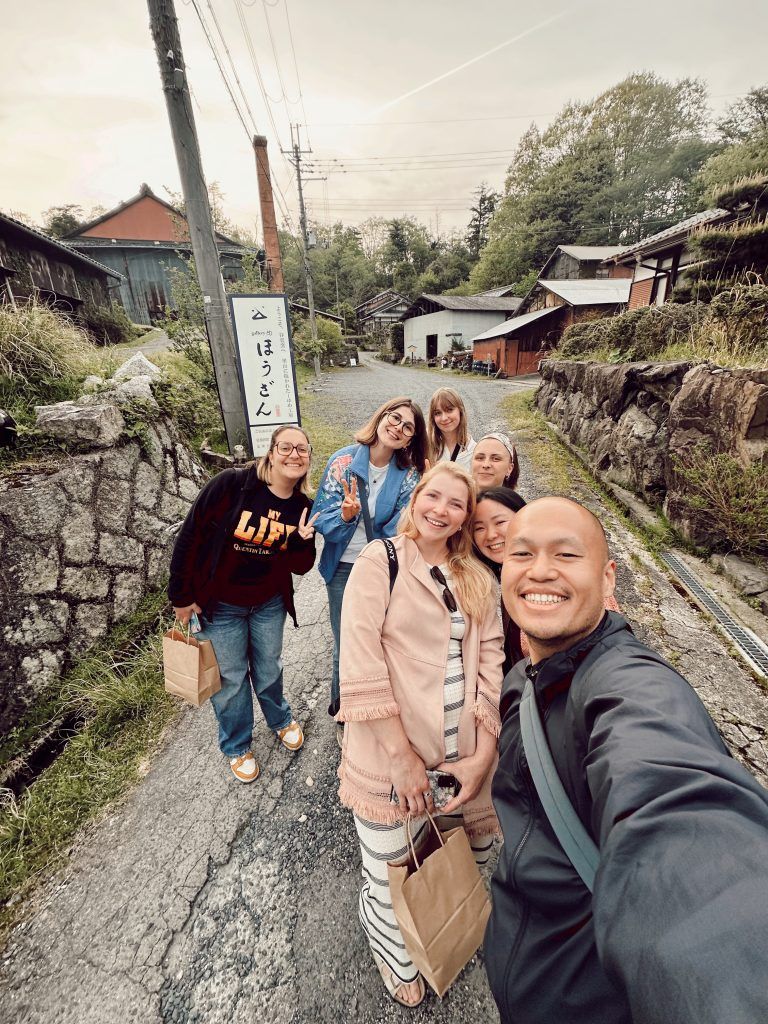
Ref

